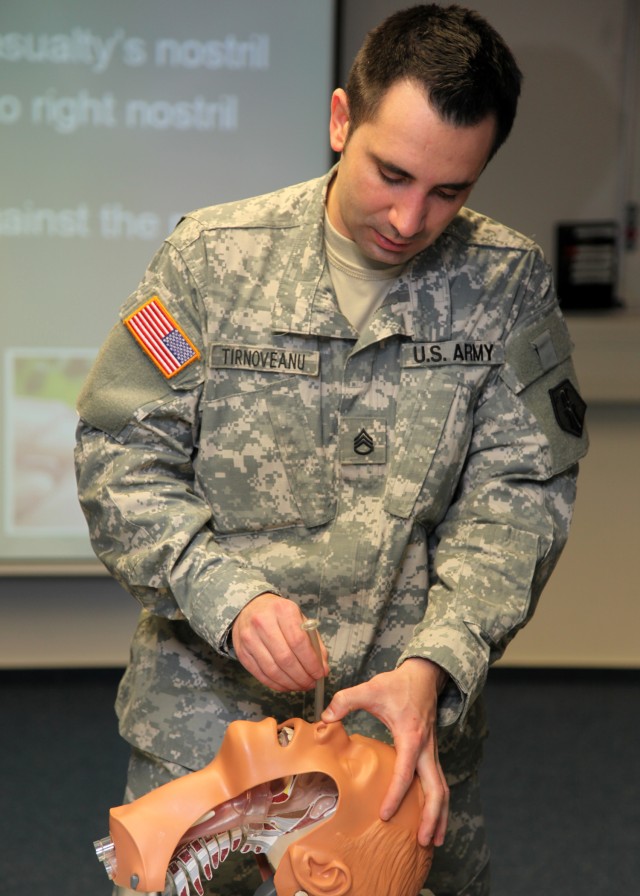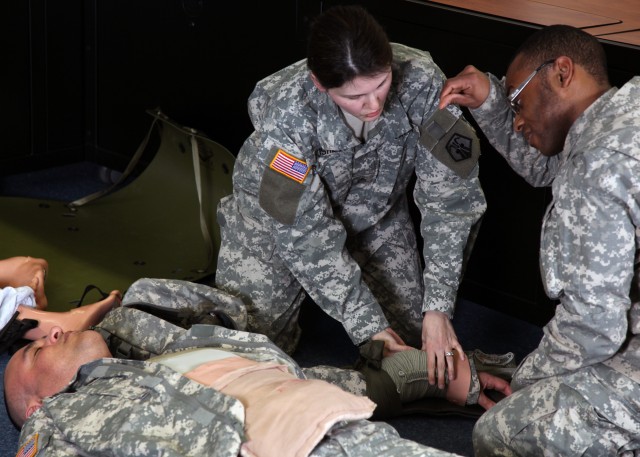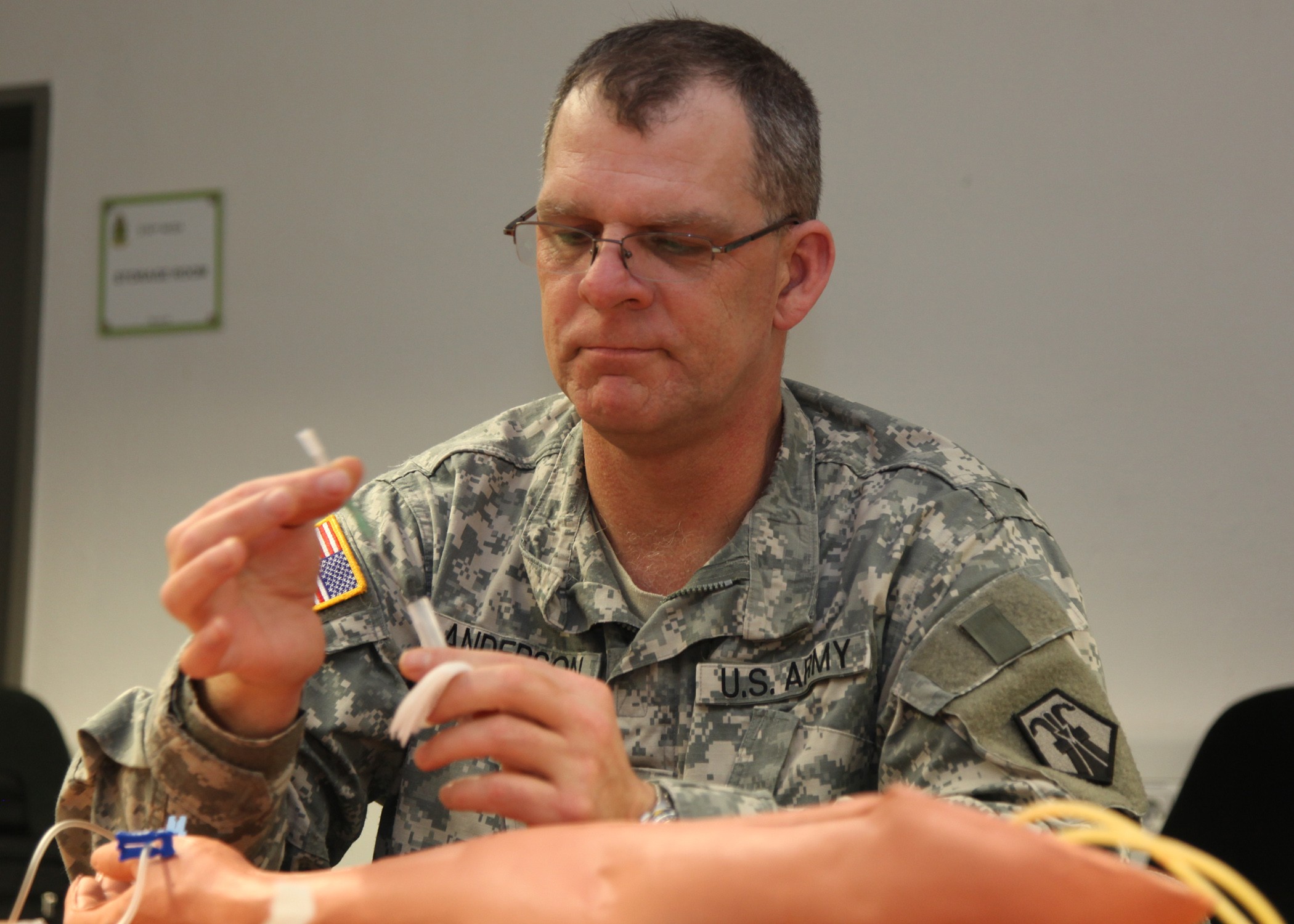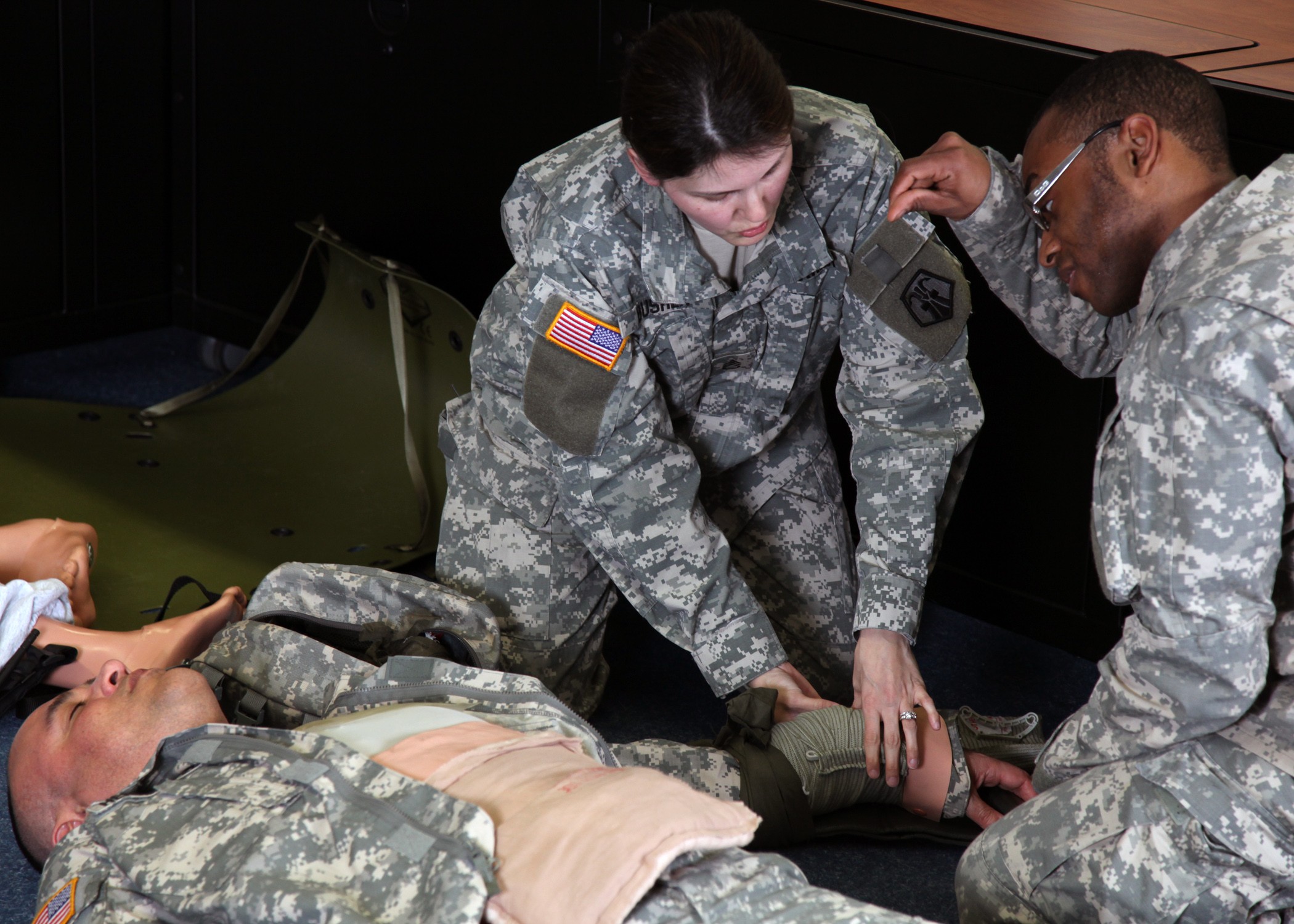GRAFENWOEHR, Germany - As rounds fly overhead and mortars slam into the ground, a Soldier defending his position turns to see his battle buddy has been seriously injured. The Soldier screams in a panic into the night "MEDIC! MEDIC!"
Soldiers from the 7th Civil Support Command, Europe's only Army Reserve command headquartered in Kaiserslautern, Germany, which includes the 7th Warrior Training Brigade, 196th Medical Support Unit and other units, attended a combat life savers course Feb. 18-21 here to help Soldiers learn combat life saving techniques. Soldiers from the 196th MSU taught the CLS course.
As portrayed in the scenario above, 90 percent of combat deaths occur on the battlefield before the casualties can be transported to a medical treatment facility. This fact is stressed to the students in the CLS course. Many conditions - such as bleeding from an extremity, collapsed lung and airway problems - can be treated on the battlefield.
"I really enjoy teaching the class," said Staff Sgt. Nieu Tirnoveanu, a CLS instructor with the 196th MSU from Mannheim, Germany, and a licensed practicing nurse in his civilian job. He has been teaching the CLS course since February of 2009. "Soldiers can learn the basics from CLS in case they are going to be in a combat situation to save a life."
During the four-day class, 12 students - ranging from specialist to command sergeant major - learned how to place a tourniquet on an amputee, stop the bleeding from a severe wound and place a nasopharyngeal airway tube in a patient who has stopped breathing, along with other techniques to save a life in an emergency or in a combat situation.
Though this class does not classify the Soldier as a medical specialist, it does give the Soldier a better chance of saving a life in the event of a medical emergency, either in combat or in the civilian sector.
"This CLS class helped me with keeping up with the latest (tactical procedures) that are changing because of the battlefield," said Staff Sgt. Patrik Ram, a Warrior Leader Course instructor with the 7th WTB. "I am very confident that this class and the knowledge I have gained from this class will ensure I can provide casualty care to my students during the (training exercise)."
Injuries can happen to Soldiers or civilians no matter where they are deployed or stationed and CLS can possibly save the life of someone who is injured.
"This class gives the Soldiers an opportunity to refresh their skills and become combat ready," said Spc. David Brown, a Nuclear, Biological and Chemical specialist with the 7th WTB. "CLS qualified personnel are a necessity but a shortage so I will be able to introduce myself as a stronger asset to the brigade."
All 12 students passed the course and can now take their CLS skills with them into the world, whether on the battlefield or during everyday life.
As rounds fly overhead and mortars slam into the ground, a Soldier defending his position turns to see his battle buddy has been injured. The CLS-certified Soldier calmly dresses the wounds and assures his fellow Soldier that help is on the way.






Social Sharing